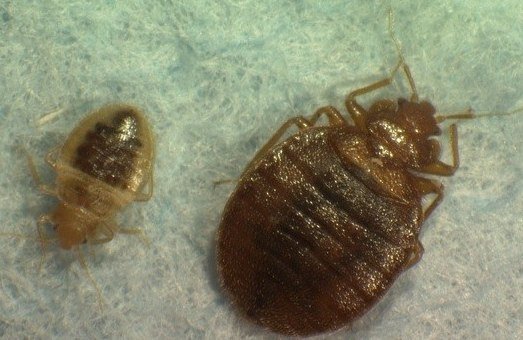New research shows that bug bombs are ineffective against bed-bug pests. In a new study, the first of its kind to be published, etymologists at Ohio State University tested three commercially available foggers – sold under the Hot Shot, Spectracide, and Eliminator brands, respectively – and concluded that all three products were virtually useless at fighting bed bug infestations.
In “Ineffectiveness of Over-the-Counter Total-Release Foggers Against the Bed Bug (Heteroptera: Cimicidae),” an article appearing in the June issue of JEE, authors Susan C. Jones and Joshua L. Bryant provide the first scientific evidence that these products should not be recommended for control of this increasingly worrisome urban pest.
“There has always been this perception and feedback from the pest-management industry that over-the-counter foggers are not effective against bed bugs and might make matters worse,” said Susan Jones, an urban entomologist with the university’s Ohio Agricultural Research and Development Center (OARDC) and a household and structural pest specialist with OSU Extension. “But up until now there has been no published data regarding the efficacy of foggers against bedbugs.”
Researchers exposed five different groups of live bedbugs to the products for two hours, and found few adverse effects on the bugs. When the bugs had a place to hide, as in real-world conditions, few died as a result of exposure to the foggers.
The only exception was one group of bedbugs that died in significant numbers five to seven days after being directly exposed to one of the foggers.
But the researchers say it’s very unlikely that bedbugs will be directly exposed to the mist from insect foggers because they can hide very easily in small spaces.
“These foggers don’t penetrate in cracks and crevices where most bed bugs are hiding, so most of them will survive,” Jones said. “If you use these products, you will not get the infestation under control, you will waste your money, and you will delay effective treatment of your infestation. Bed bugs are among the most difficult and expensive urban pests to control. It typically takes a professional to do it right. Also, the ineffective use of these products can lead to further resistance in insects.”
Bedbugs are hitchhikers, they get into your house by clinging on to clothing, shoes, handbags and upholstered furniture. Once they’re in our house, they can live up to eight months without “eating”. The tiny bugs breed quickly and if you don’t treat for bedbugs quickly, you’ll have a major infestation on your hands. Experts say 40 bed bugs today will be 6000 in 6 months! Bedbugs don’t have to live on mattresses, they can also live in furniture and in walls.
Bed bugs are a major nuisance but generally don’t pose a threat to health, as their bites rarely cause more than itching welts or the occasional allergic reaction. Foggers, on the other hand, can be hazardous if used incorrectly.
In a 2008 report, the Centers for Disease Control and Prevention indicated that at least 466 fogger-related injuries or illnesses were documented across eight states between 2001 and 2006. The most common ill effects—such as headaches, nausea, and coughing – tended to be minor and short-lived, although hospitalization was required in 21 cases.
“Bedbugs are among the most difficult and expensive urban pests to control. It typically takes a professional to do it right,” says Jones. “Also, the ineffective use of these products can lead to further resistance in insects.”
Additionally, the CDC says excessive use of bug bombs, foggers, and other insecticides against bedbugs can lead to human illness and possibly death.
Journal source: http://www.entsoc.org/Pubs/Periodicals/JEE
